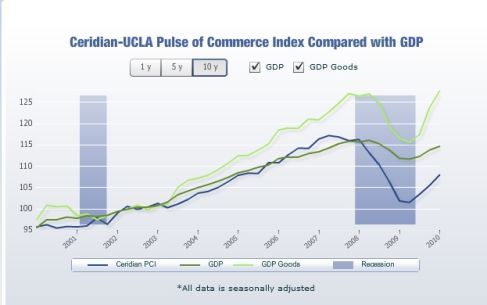Article
Offbeat Indicators Suggest Economy's on the Rebound
Author(s):
All the closely watched economic indicators -- retail sales, consumer prices, unemployment rates, and home prices -- are giving off mixed signals. But these under-the-radar indicators are surprisingly accurate at calling the direction of the economy ... and the news is good.
For several weeks back in the spring, the stock market was signaling better days ahead for the economy. Since then, the market has dropped significantly and closely watched indicators like retail sales, the consumer product index, unemployment rates, and home-price reports are sending mixed signals.
There are other measures, however, that are showing that the economic recovery is on track. The problem is that you’re not likely to see these metrics make the headlines on the news.
One under-the-radar indicator is the Ceridian-UCLA Pulse of Commerce Index, which measures real-time diesel fuel sales at 7,000 truck stops across the country. The PCI, which tracks closely to growth in U.S. gross domestic product (GDP), was up 3.1 percent in May -- the biggest month-over-month increase in more than a decade. (The year-over-year increase was 9 percent.)

The 3.1 percent spike in May’s PCI "is as good as it gets," according to Chief Economist Ed Leamer.
Both figures signal a GDP growth in the 3 percent to 5 percent range for the second quarter, according to PCI economists, which is inching closer to the 5% to 6% growth needed to impact the unemployment rate.
You might not think of waste and scrap metal as economic indicators, but according to Bloomberg.com, there’s an 82 percent correlation between train shipments of waste and scrap and the nation’s GDP. According to statistics from the American Association of Railroads, more than 79,000 freight cars will carry waste and scrap in April and May of this year. That a 45% increase over the same period last year, and the biggest jump in more than 15 years.
It’s not unusual for economists to point to retail parking lots as a sure sign of the current state of the economy -- packed lots bode well for the GDP (which is largely driven by consumer spending). But another not-so-familiar measurement is electricity output, which can indicate how much power is being used by retail outlets and office buildings. Recent reports indicate that electrical output has risen as much as 10% year-over-year, signaling that these sectors are gaining.




